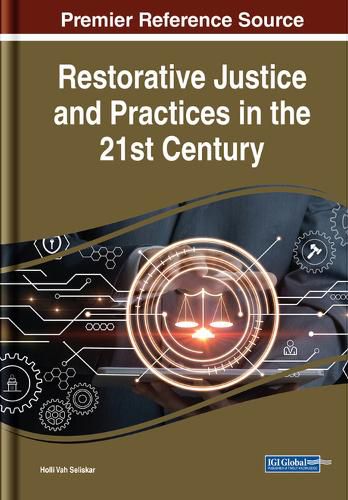Readings Newsletter
Become a Readings Member to make your shopping experience even easier.
Sign in or sign up for free!
You’re not far away from qualifying for FREE standard shipping within Australia
You’ve qualified for FREE standard shipping within Australia
The cart is loading…






This title is printed to order. This book may have been self-published. If so, we cannot guarantee the quality of the content. In the main most books will have gone through the editing process however some may not. We therefore suggest that you be aware of this before ordering this book. If in doubt check either the author or publisher’s details as we are unable to accept any returns unless they are faulty. Please contact us if you have any questions.
Restorative justice is a conceptual and practical framework for repairing any harm that may have been caused either to people, property, or things. It is essential to investigate examples, scenarios, perspectives, strategies, and implications for the use of restorative justice in diverse settings, including K-12 settings, colleges and universities, the workplace, and within public safety organizations and departments. Emphasis must also be placed on diversity, equity, belonging, and inclusion and how restorative practices foster the use of inclusive practices and accessibility for all persons.
Restorative Justice and Practices in the 21st Century offers broad perspectives across numerous disciplines and professions and provides restorative practitioners with a timely account of what restorative justice and practices may offer to their respective organizations, school, or agency. It provides possible strategies and actions to implement restorative practices as well as how restorative practices can provide different strategies and methods in handling conflict, disputes, and discipline. Covering topics such as equity and inequalities, pedagogical reflection, and indigenous roots, this premier reference source is an essential resource for administrators and educators of both K-12 and higher education, public safety officials, law enforcement, corrections officers, students of higher education, librarians, researchers, and academicians.
$9.00 standard shipping within Australia
FREE standard shipping within Australia for orders over $100.00
Express & International shipping calculated at checkout
This title is printed to order. This book may have been self-published. If so, we cannot guarantee the quality of the content. In the main most books will have gone through the editing process however some may not. We therefore suggest that you be aware of this before ordering this book. If in doubt check either the author or publisher’s details as we are unable to accept any returns unless they are faulty. Please contact us if you have any questions.
Restorative justice is a conceptual and practical framework for repairing any harm that may have been caused either to people, property, or things. It is essential to investigate examples, scenarios, perspectives, strategies, and implications for the use of restorative justice in diverse settings, including K-12 settings, colleges and universities, the workplace, and within public safety organizations and departments. Emphasis must also be placed on diversity, equity, belonging, and inclusion and how restorative practices foster the use of inclusive practices and accessibility for all persons.
Restorative Justice and Practices in the 21st Century offers broad perspectives across numerous disciplines and professions and provides restorative practitioners with a timely account of what restorative justice and practices may offer to their respective organizations, school, or agency. It provides possible strategies and actions to implement restorative practices as well as how restorative practices can provide different strategies and methods in handling conflict, disputes, and discipline. Covering topics such as equity and inequalities, pedagogical reflection, and indigenous roots, this premier reference source is an essential resource for administrators and educators of both K-12 and higher education, public safety officials, law enforcement, corrections officers, students of higher education, librarians, researchers, and academicians.